The Amur tiger lives in the far east of Russia, and across the border in china. As little as 15 years ago, the number of Amur tigers living within China had fallen to 20 (or possibly even less.


Wildlife and conservation new, wild travel information and links for booking
The Amur tiger lives in the far east of Russia, and across the border in china. As little as 15 years ago, the number of Amur tigers living within China had fallen to 20 (or possibly even less.

If is easy to think that we should not be saving subspecies, but instead investing money in conserving other animals that are still threatened.
Unfortunately, this is the wrong way to look at it. Malaysia tigers only exist in a small strip between Malaysia and Thailand. The dense rainforest here has been standing in its current form for longer than the Amazon or the Congo.
In the 1950s there were 3000 tigers, yet in just 70 years this number has been reduced to just 200.
Subspecies are different – obviously, and their differences actually make a difference in the species survival, as well as its success. Introducing a subspecies from another area can have unexpected effects. If the subspecies is lost, then a different subspecies is likely to fill the niche better than none.
Tiger subspecies while extremely closely related, have evolved for millennia to be suited to their environment. If we take this to its extreme can you imagine reintroducing Sumatran tigers into the frozen wastelands of Siberia? The Amur tiger can measure 3m from head to end of tail, where as a Sumatran tiger only measures 2.4m
My feeling is that we should be moving from concentrating on specific species to ecosystems. it is certainly harder to generate the interest, but by looking at it on the ecosystem level we recognize that we need the apex predators for that ecosystem – whether they are a subspecies version of the tiger leopard or something else.
All species are important, often reintroductions have failed because a small unnoticed animal was missed. Over time, we will amass pages for as many species as possible. However, just as important is seeing how species are closely related. As such as well as looking at species from a specific ecosystem or family, we will also include family trees of many of the families on earth. It should be noted, that this is to help you find wildlife you wish to see, so will never link to every species. In either way, these links to these will be placed at the top.
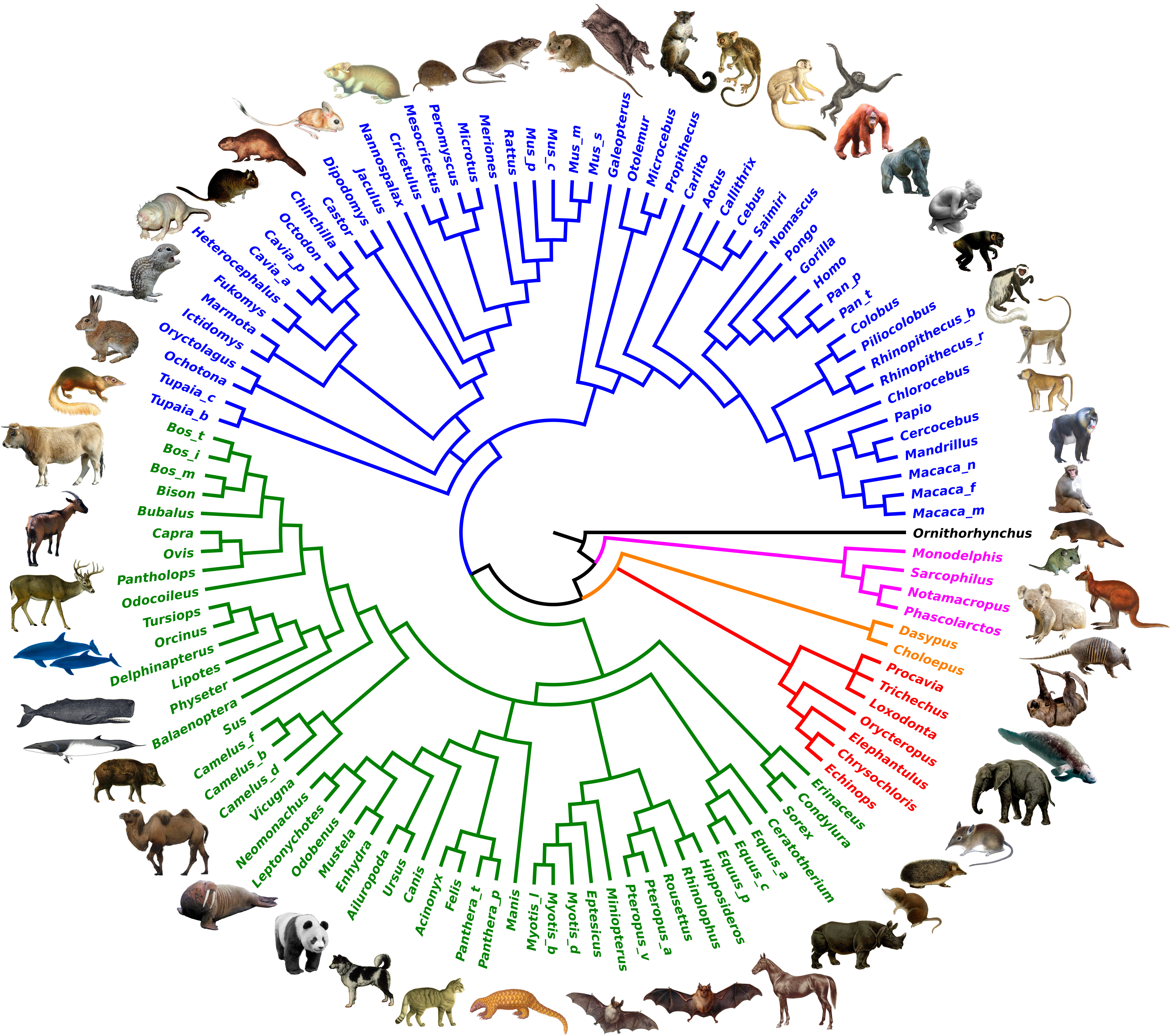
Tigers – Unlike Lions, tigers are not kings of their ecosystem in the same way as lions. While lions live in prides and lie out in the open, Tigers are solitary (except mothers with their young, or a current breeding pair.
In most instances, male tigers also have no part in caring for young. Amur tigers have a hard time finding food, and there are many documented cases where male tigers will leave kills for their mate and young. This has not been regularly noted amongst other sub species which live in places where food is easier to come across.
We are yet to add any destinations to go see wild tigers, but they will appear on this page, along with a list of articles from the blog on this subject. With a range of different subspecies, which range from relatively secure and growing population, to those on the edge of extinction.
Tigers actually have a similar density in their habitat as a whole to lions (lions are about 5 times as populous, and have a range of about 5 times greater. Tigers roam around 650,000 square km, but with 4500 wild tigers – In other words, overall each species has on average a similar density. Unfortunately, due to their solitary, and often nocturnal habits, it is better to compare tigers to leopards – for many visitors to Africa, while they might see 30 lions in a week, they might see just a couple of Leopards. Having said this, in India, this is recognized, and when a tiger is found you can take a ride on an elephant which will allow you to leave the road and get up and close to an elephant.
Tigers are still found in a variety of countries, however, for the time being, I have not broken them down in this way, as it is more useful to look at them as their former subspecies (I say former because of a decision a few years ago – for more, look below the tiger picture that is below this text).
Below is a list of articles on all subspecies of tiger. Below that is a set of tabs, which will allow you to read about each subspecies. This is because tigers roam around 650,000 square km, however, there is thought that this could be increased by 1.7 million square km. It should be noted, that the current range of the tiger is only around 5% of its historical range.
We are eager to list as many places to see the wild tiger as we possibly can. We hope that each subspecies will eventually have plenty of destinations to see them in the wild. There are many people living alongside these animals, and as such tourism can help these peoples to earn a better income, while they protect these incredible animals.
I should note, that since 2017 there have only been 2 subspecies recognized. That of the continental tigers (Bengal, Amur, Malayan Indochinese, South China and the Caspian) and the so called Sunda tiger (historically from Sumatra Java and Bali, though only surviving in Sumatra). Now, I find it hard to believe that a Bengal tiger would survive in the Amur region of Russia. However, it may well have been found that the differences are not distinct enough to warrant subspecies status. As chance would have it, that would mean that the top line talks about distinct populations of the Continental Tiger, while the bottom line talks about the Sunda tiger populations

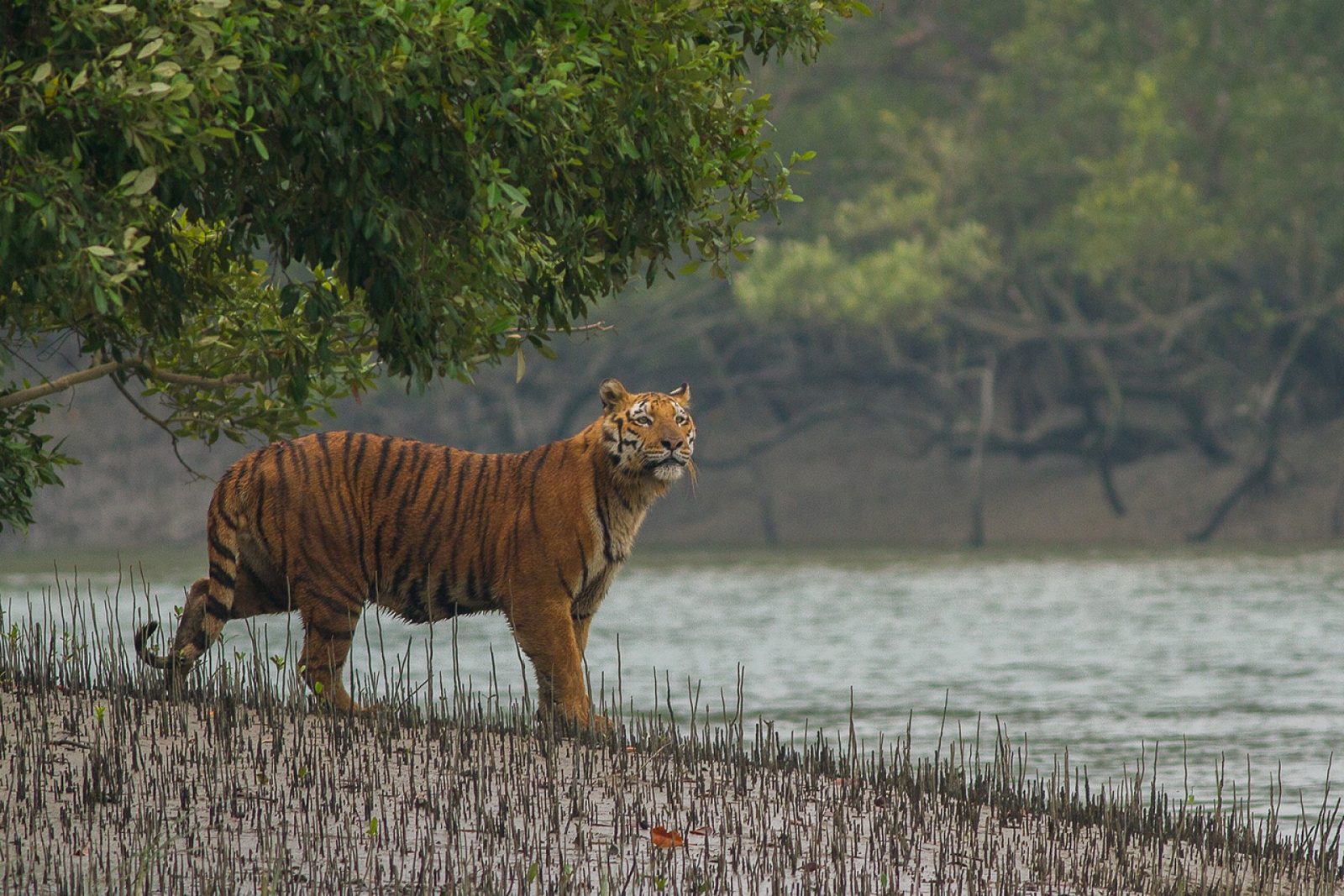
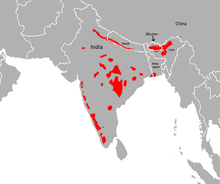 The country with the most tigers is India, hosting around 70% of the remaining tigers, or a little over 3000. However, this is down from 100,000 in 1900. In 2006 the Indian tiger population was as low as just 1411 – there are individual reserves in Africa with more lions in than this number. Given that there are 54 tiger reserves in India, that leaves an average population of just 30 per reserve – translocation will be required to maintain genetically healthy tigers. Formerly working on pug-marks, counting has been replaced with photo identification, as pug marks were overestimating the population (Simlipal reserve in Orissa state claimed 101 tigers in 2004, yet in 2010 a photo count stated 61, and this is thought a a huge over estimate, as the same state government claims just 45 tigers across the state. Sariska and Panna reserves in India are worse with the government having to admit that there are no tigers left (2 reserves of at least 5 so called tiger reserves with none left).
The country with the most tigers is India, hosting around 70% of the remaining tigers, or a little over 3000. However, this is down from 100,000 in 1900. In 2006 the Indian tiger population was as low as just 1411 – there are individual reserves in Africa with more lions in than this number. Given that there are 54 tiger reserves in India, that leaves an average population of just 30 per reserve – translocation will be required to maintain genetically healthy tigers. Formerly working on pug-marks, counting has been replaced with photo identification, as pug marks were overestimating the population (Simlipal reserve in Orissa state claimed 101 tigers in 2004, yet in 2010 a photo count stated 61, and this is thought a a huge over estimate, as the same state government claims just 45 tigers across the state. Sariska and Panna reserves in India are worse with the government having to admit that there are no tigers left (2 reserves of at least 5 so called tiger reserves with none left).
In a list of the best places to see tigers, India will often count more than half of them within its borders. There are many destinations with some tigers, and around half of the
There is currently an estimated 3100 Bengal tigers and they are listed as endangered. However, the total number of wild tigers is around 4500, so around 2/3 live in India.
The vast majority of Bengal tigers live within India (and the Bengal tiger is the most common subspecies). The country has done very well over the last decade or more, with the number of tigers more than doubling, to a total of around 3100 (it should be noted, that while it was just 1411 in 2006 – just 18 years ago, it was thought to be over 100,000 back in 1900.
As of 2024, there are 55 tiger reserves, covering a combined 75,796.83 square kilometres (29,265 square miles).
It should be noted that while some have done very well, others have been shown to have zero tigers left (until recent times, the Indian government did its surveys on tiger populations using pug marks, and method shown to be extremely poor in accuracy). These reserves include Sahyadri, Satkosia, Kawal, Kamlang, and Indravati tiger reserve – alarmingly, despite this complete failure to protect their namesake (and all having had tigers in the recent past) the first 2 were rated as very good, the second two as good and the last as fair, something that suggests India has not recognized the failings.
Never-the-less, this still leaves 50 reserves with tiger populations.
Some of the best places to head, include
Bangladesh still has tigers, living in several areas. 2/3 of the Sundarbans lie within Bangladesh, however, unfortunately, there has been much tiger poaching within this area.
In 2004, there was an estimated 440 Tigers living within the Bangladesh section of the Sundarbans, however the same survey carried out in 2018 just counted 114. There has been some argument as to how accurate the first survey actually was, however, there has been much known poaching, with one man finally caught in 2021 who was thought to have killed 70 tigers over 20 years. What I am saying, is that if one man killed 70 tigers, is it a difficult thing to believe that all other poachers managed to kill 256 tigers in the same period?
While in theory the Sandarbans might be thought of as a good tiger conservation area, long-term, we might have a problem. The majority of the forest floor, ranges from 0.91m to 2.11m above sea level, with the hoghest point being just 3m above sea level.
Even if we were to reduce emissions in line with the whole Paris climate accord, we are looking at between 0.28-0.55m rise, which will destroy large parts of the Sundarbans., while the polar ice sheet disintegration (a scary one as we do not know where the tipping point is on this) we could see sea level rise of 5m.
The other tiger area is the Chittagong Hill Tracts, which is the only hilly area in Bangladesh. It is home to a variety of tribes as well as an estimated 15 tigers. Obviously, this is not a viable population, so without significant human intervention, the loss of the Sundarbans would likely lead to a loss of the Chttagong hill tracts tigers in a relatively short time.
Bhutan had a survey of its tiger population in 2024, and 131 tigers were counted, a 27% increase on the previous survey in 2016. This is good, but particularly as Bhutan. can largely be thought of as a high altitude corridor which connects much of the remaining Bengal tiger habitat. This means that, without it, recovery is going to be harder. Bhutan is a very mountainous country, and as such was not historically seen as a possible habitat, but when tigers were filmed (by camera trap) 4000m up in the Himalayas. Despite being thought of as a corridor, it appeared that tigers at this height were actually showing mating behaviour, suggesting that the whole life of tigers was taking place at this altitude – and therefore there could also be a permanent population on the roof of the world.
Reserves with tigers, within the country include
Bengal tigers are found in Nepal in low numbers (going on the numbers in reserves below, In 2022, the country estimated a population of 355 tigers (well above the 250 needed for Nepal to have doubled its tiger population, but still well below the tiger population that would have lived there, just a few decades ago.
The number of tigers in China is estimated at under 400, however, this is likely a very high estimate. There are reasonable doubts if any Bengal tigers survive in the country. It is far more likely that the last one has already been lost.

 Russia hosts one of the hardest tigers to see. However, there are now around 500 Amur tigers roaming the remote far east of Russia, up from less than 40 in the 1940s, this population has also had great gains.
Russia hosts one of the hardest tigers to see. However, there are now around 500 Amur tigers roaming the remote far east of Russia, up from less than 40 in the 1940s, this population has also had great gains. Unfortunately there is little habitat for this population to grow much more, however recent genetic analysis has shown that the Amur tiger and the Caspian tiger (which lived in the far west of Russia, as well as various other countries around here like Türkiye (the new spelling of turkey)) is not distinct enough to be a separate subspecies – it is actually the western portion of the Amur tiger. The genetic analysis suggests that the two populations split within the last 200 years. This makes the map to the right, incorrect, as the whole of the Caspian tiger tiger range should be added to the pink part of the map.
The Caspian tiger’s population was once estimated to be two to three tigers per 100 square kilometers in their habitat. The Caspian tiger’s range was once as large as 800,000–900,000 square kilometers, and they lived in many regions, including:
Turkey, Iran, Kazakhstan, China, Trans-Caucasia, Eastern Anatolia, Central Asia’s riverine tugai forest systems
The Caspian tiger’s population declined due to a number of factors, including:
The last Caspian tiger was officially documented in 1958, and the species was declared extinct in 2003.
However, these discoveries mean we should be able to translocate Amur tigers west to repopulate these long empty tiger ranges. Ili-Balkash Nature Reserve in Kazakhstan covers 4150 square km (1600 square miles). This is large enough for a population of around 120 tigers. The Caspian tiger, was thought to have a total population of as high as 27000 historically, so there is a great deal of range which this animal could return to.
Currently, there are thought to be between 265 and 486, the 750 number shows an impressive recovery, though given all the other things that the Russian government has lied about, we should be careful. They are listed as endangered. It should be noted, that in the 1930s there was just 20-30 Amur tigers , so this is a quite fantastic recovery – the population has increased by 800-2400% in around 100 years. It should be noted, that the Amur leopard has done half of the recovery of the possibly population increase, in just 20 years – showing what is possible. A similar recovery at the current time with Amur Leopards, would return this population to around 500.
Much of the recovery, is down to reserves being set up in both China and Russia, for these cats protection. Expansion of these reserves would allow more cats to survive, while the founding and growing of an eco-tourism market could allow locals to benefit from the tigers and leopards living there.
We are eager to work with anyone in the field, do get in touch. Click on list your wild place.
It is unlikely that there are any permanent tigers living in North Korea, however as you can see from the above video, there are definitely visitors. The reserves in Russia and China are both close by, so it seems quite reasonable for these tigers to appear in the country from time to time. Unfortunately, the prey populations would likely have to recover for the tiger to live in the country long-term, and it is unclear how much land is available. With the horrific humanitarian situation within the country, it is also quite likely that even if the wilderness could support the tiger, they would be poached out of existence once again.
It appears that tigers use the boundaries of each park as so-called highways, and so tigers probably visit relatively regularly. The situation in North Korea, is generally too dangerous at the current time for travel, and in any case, given the tiger is just an occasional visitor, it is unlikely that any tourist would spot one.
The wildlife conservation society of China has camera traps which suggested 45 tigers were living on their land in the northeast, along with 30 leopards.
The Dahuanggou region was also found to have 9 Amur tigers and 4 leopards.
This does seem an impressive recovery, though this may well be at least in part down to formal reserves and an attempt to police them, which happened less in the past.
Should there be tourist operators working in this area, do click on List your wild (on the top menu) or click here to add your reserve
The Amur tiger conservation and recovery has been a focus of Vladimir Putin, and as such, the Russian population of Amur tigers has risen from 390 Amur tigers in 2012, up to 750 in the most recent survey.
With the increase in Chinese tigers, the wild Amur tiger population is now over 800.
In the 1940s the population was under 50, so while it may have taken 80 years, but the population of Amur tigers is well on its way to recovery in the Russian far east. Now, it should be noted, that the Caspian tiger has been shown, to be merely a subpopulation of the Amur tiger, so there is the capability to be far higher. Going back over a century, before the horrific decision to eradicate the Amur tiger,there were around 3000 tigers in the wild. The Caspian tiger range,

The Caspian tiger was officially declared extinct in 2003, with the last two sightings were in 1958 and 1974 (in Kegeli in Karakalpkstan).
Before its local extinction, this tiger occurred in eastern Turkey, southern Caucasus, northern Iran, Iraq, and in isolated pockets throughout Central Asia as far as north-western China. Whether it will ever be allowed to have a range like this, is anyone’s guess. Clearly, humans were curtailing its range very early on. The only record for instance of its presence in Iraq, was from a 1887, when one was shot near Mosul. The last tiger in Turkey was shot in 1970, with Iran loosing its last in either 1953 or 1958, and the last tiger of Turkmenistan being shot in 1954.
Given the vast historic range of the Caspian tiger (and the recent discovery that the Caspian and Amur tiger is the same subspecies, there is many areas that are suitable for reintroduction. It is also possible, that by strategically translocating, it might be possible to reduce the number of tigers in the areas where they share habitat with Amur leopards, which might allow this population to also grow faster. The Caspian tiger is officially extinct, though it should be subsumed into the Amur tiger subspecies. It ranged from the eastern parts of Turkey to the central part of Russia (where it joined with the Amur tiger population. Plans are afoot to re-establish tigers in this range, given that as the Amur tiger is the same sub-species it should thrive as it did in the past.
Please look under Amur tiger for further, other information, as these two subspecies have proved to be the same thing. Any links for visiting areas with Amur/Caspian tigers, will be made on the Amur tiger tab, as this supspecies subsumed the Caspian tiger not the other way round.
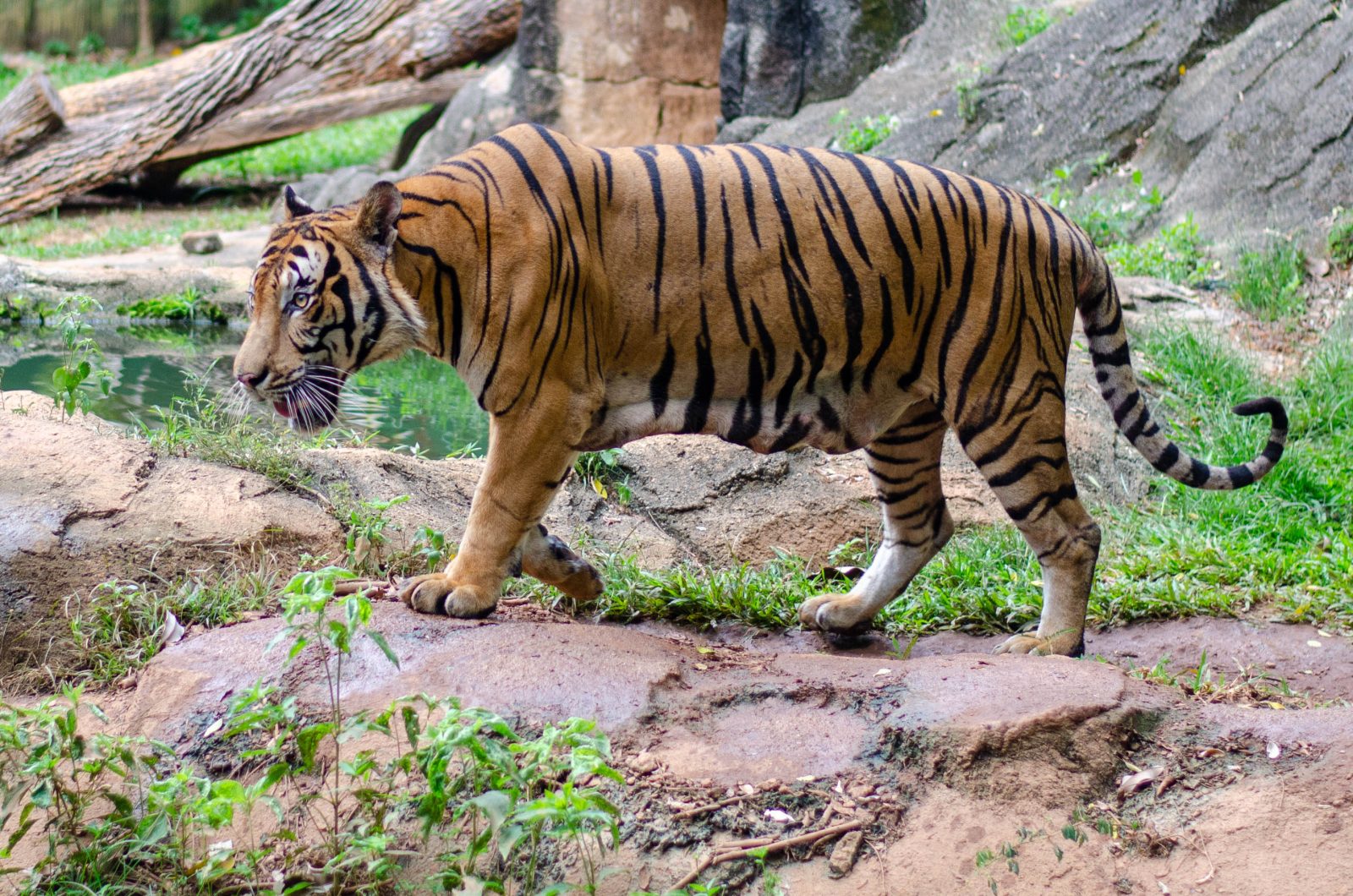
The Malaysian tiger is a subspecies of tiger that is found on the Malaysian peninsular. There are only thought to be 80-120 tigers left in this country, and this has been caused by a variety of factors, including poaching for skin and bones, as well as habitat loss and fracturing, into smaller areas. It is similar to the Indochinese tiger (to the right) though it is smaller, and is the smallest mainland subspecies, though only slightly bigger on average than the Sumatran tiger.
As with elsewhere, increased tourism dollars, might well help local people see value in preserving this species. In the 1950s there were around 3000 of these tigers, however given a density of 1-2 tigers per 100 square km that would require a lot of space. Malaysia protects about 13.3% of its land area which equates to 44,000 square km. .Going by top densities, this is only space for almost 900 tigers (though that is 8 to 9 times the current population) but if poaching were to stop, this situation could change fast.
They are classed as critically endangered. Do get in touch if you work in a reserve that these tigers live in, we are eager to help people find you.

Historically found in Cambodia, China, Laos, Myanmar, Thailand, and Vietnam, this species decline is large. In 2010, the assessment was that there were 250 left in Thailand, with around 85 in Myanmar and perhaps 20 hanging on in Vietnam. It is thought that the population is now just 250. This sub-species is found in Myanmar(85)) and Thiland(237), with a total population of an estimated 342 individuals. Back in 2009-2014 the population was thought to be between 189-252 in this period. Vietnam is only thought to have 5 remaining, while Laos is thought to have 2. Historically, it was also found in Cambodia and China. Historically, it is thought that this species range would have gone further North, potentially up to Chittagong Hill Tracts and Brahmaputra River basin, where the Bengal tiger populations range ended.
In Myanmar, surveys were conducted between 1999 and 2002, confirming the presence of tigers in the Hukawng Valley, Htamanthi Wildlife Sanctuary and in two small areas in the Tanintharyi Region. The Tenasserim Hills is an important area, but forests are harvested there (which means that they may be too much disruption for the tiger to survive here). In 2015, a camera trap took an image of a tiger in the hill forests of Kayin State. Camera trap surveys between 2016 and 2018 revealed about 22 adult individuals in three sites that represent 8% of the potential tiger habitat in the country. How many the rest of the country could support even if they had to be reintroduced is beyond the scope of this.
More than half of the total Indochinese tiger population survives in the Western Forest Complex in Thailand (Covering an area of about 18,000 sq. km. extended into Myanmar border along the Tennaserim Range and abreviated to (WEFCOM)) is considered as the largest remaining forest track in the mainland Southeast Asia that is made up of 17 protected areas (without gaps between them; 11 national parks and 6 wildlife sanctuaries.), especially in the area of the Huai Kha Khaeng Wildlife Sanctuary. This habitat consists of tropical and subtropical moist broadleaf forests. Camera trap surveys from 2008 to 2017 in eastern Thailand detected about 17 adult tigers in an area of 4,445 km2 (1,716 sq mi) in Dong Phayayen–Khao Yai Forest Complex. Several individuals had cubs. The population density in Thap Lan National Park, Pang Sida National Park and Dong Yai Wildlife Sanctuary was estimated at 0.32–1.21 individuals per 100 km2 (39 sq mi). Three subadult tigers were photographed in spring 2020 in a remote region of Thailand that are thought to be dispersing – moving out of areas which they were born into, and trying to find territory of their own.
In Laos, 14 tigers were documented in Nam Et-Phou Louey National Protected Area during surveys from 2013 to 2017, covering four blocks of about 200 km2 (77 sq mi) semi-evergreen and evergreen forest that are interspersed with some patches of grassland. Surveys that have been carried out since, have failed to detect any tigers, and the likelihood is that they have been extirpated as a result of poaching. Given the huge value of dead tigers in Chinese medicine, this is not a big surprise, as the current value for a carcass of a dead tiger is around £67,000 before doing anything with it, the value of it after extracting everything used in Chinese medicine (no evidence that it does anything) is around 5 times higher or £335,000. That is a huge windfall, but given that the average salary in Thailand is about £2200 a year (meaning that while many earn a great deal more than this, also many earn much less). 335,000, therefore represents perhaps 150 years of average salary. This is another place, where tourism can help. A thriving tourism industry will bring well paid jobs to many, and will therefore, not only preserve the tiger, but has the capacity of lifting many communities out of destitution.
In eastern Cambodia, tigers were last recorded in Mondulkiri Protected Forest and Virachey National Park during surveys between 1999 and 2007. In 2016, the Cambodian government declared that the tiger was “functionally extinct”. In April 2023, India signed a memorandum of understanding with Cambodia to assist the country with the tiger’s reintroduction. At least 90 acres (36 ha) of the Cardamom Mountains of Tatai Wildlife Sanctuary could be used to host Bengal tigers (though this if a correct number is not going to do much for a wild tiger).
From the 1960s and earlier, the Indochinese tiger occurred throughout the mountains in Vietnam, even in the midlands and Islands. In the report of the Government of Vietnam at the Tiger Forum in 2004, there would be tigers in only 17 provinces and they were living in fragmented and severely degraded forest areas. Tigers were still present in 14 protected areas in the 1990s, but none have been recorded in the country since 1997. There is news of its extinction in both countries. In Laos, no tiger has been seen since 2013, when its populations were estimated at only two, and these two individuals simply vanished shortly after 2013 from Nam Et-Phou Louey National Protected Area, denoting they were most likely killed either by snare or gun. In Vietnam, a 2014 IUCN Red List report indicated that tigers were possibly extinct in Vietnam.
In China, it occurred historically in Yunnan province and Mêdog County, where it probably does not survive today. Thus, probably the Indochinese tiger now only survives in Thailand and Myanmar. In Yunnan’s Shangyong Nature Reserve, three individuals were detected during surveys carried out from 2004 to 2009.
In Thailand’s Huai Kha Khaeng Wildlife Sanctuary, 11 individual tigers were equipped with GPS radio collars between June 2005 and August 2011. Females had a mean home range of 70.2km2 (27.1 sq mi) and males of 267.6km2 (103.3sq mi).
Between 2013 and 2015, 11 prey species were identified at 150 kill sites. They ranged in weight from 3 to 287 kg. Sambar deer, banteng, gaur, and wild boar were most frequently killed, but also remains of Asian elephant calves, hog badger, Old World porcupine, muntjac, serow, pangolin, and langur species were identified.
The primary threat to the tiger is poaching for the illegal wildlife trade. Tiger bone has been an ingredient in traditional Chinese medicine for more than 1,500 years and is either added to medicinal wine, used in the form of powder, or boiled to a glue-like consistency. More than 40 different formulae containing tiger bone were produced by at least 226 Chinese companies in 1993. Tiger bone glue is a popular medicine among urban Vietnamese consumers.
Between 1970 and 1993, South Korea imported 607 kg of tiger bones from Thailand and 2,415 kg from China between 1991 and 1993. Between 2001 and 2010, wildlife markets were surveyed in Myanmar, Thailand, and Laos. During 13 surveys, 157 body parts of tigers were found, representing at least 91 individuals. Whole skins were the most commonly traded parts. Bones, paws, and penises were offered as aphrodisiacs in places with a large sex industry. Tiger bone wine was offered foremost in shops catering to Chinese customers. Traditional medicine accounted for a large portion of products sold and exported to China, Laos, and Vietnam. Between 2000 and 2011, 641 tigers, both live and dead, were seized in 196 incidents in Thailand, Laos, Vietnam, Cambodia, and China; 275 tigers were suspected to have leaked into trade from captive facilities. China was the most common destination of the seized tigers.
In Myanmar’s Hukaung Valley, the Yuzana Corporation, alongside local authorities, has expropriated more than 200,000 acres (81,000 ha) of land from more than 600 households since 2006. Much of the trees have been logged, and the land has been transformed into plantations. Some of the land taken by the Yazana Corporation had been deemed tiger transit corridors. Without this land, smaller reserves can instantly become incapable of supporting tigers longterm. These are areas of land that were supposed to be left untouched by development in order to allow the region’s Indochinese tigers to travel between protected pockets of reservation land.
Since 1993, the Indochinese tiger has been listed on CITES Appendix I, making international trade illegal. China, South Korea, Vietnam, Singapore, and Taiwan banned trade in tigers and sale of medicinal derivatives. Manufacture of tiger-based medicine was banned in China, and the open sale of tiger-based medicine reduced significantly since 1995.
Patrolling in Thailand’s Huai Kha Khaeng Wildlife Sanctuary has been intensified since 2006 so that poaching appears to have been reduced, resulting in a marginal improvement of tiger survival and recruitment. By autumn 2016, at least two individuals had dispersed to adjacent Mae Wong National Park; six cubs were observed in Mae Wong and the contiguous Khlong Lan National Park in 2016, indicating that the population was breeding and recovering.[43]
In Thailand and Laos, this tiger is considered Endangered, while it is considered Critically Endangered in Vietnam and Myanmar. Of course, if all this is correct, then some of these countries should amend their listing to extinct.
The Indochinese tiger is the least represented in captivity and is not part of a coordinated breeding program. As of 2007, 14 individuals were recognized as Indochinese tigers based on genetic analysis of 105 captive tigers in 14 countries. This is no where near enough to be able to do a reintroduction.
I will hope to add links to help arrange travel to see this species, do get in touch if you can help
More than half of the total Indochinese tiger population survives in the Western Forest Complex in Thailand, especially in the area of the Huai Kha Khaeng Wildlife Sanctuary.
They are considered endangered in Thailand and critically endangered in Myanmar and Vietnam
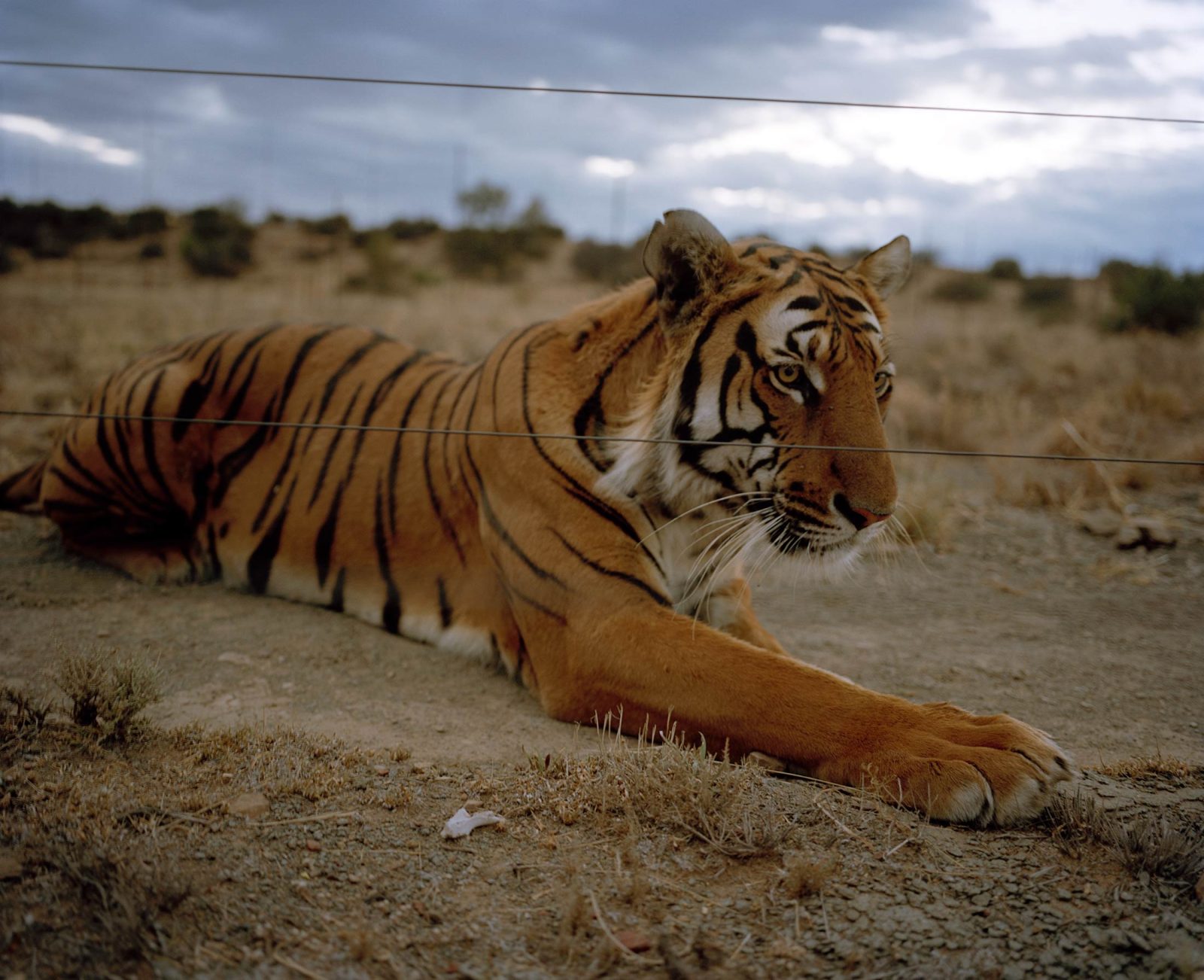
This subspecies is definitely extinct in the wild. It was considered critically endangered from 1996, but none have been seen since the early 1990s. The human population is large in this area.
The captive South China tiger population is thought to be around 150, though it is thought that few if any are pure South China tiger.
Laohu Valley Reserve, Free State in South Africa, is a 300 square km reserve which has been used to rewild the first of these tigers. There are now thought to be around 18 that could return to South China, and the plan was for them to return in 2008. Unfortunately, the situation there, has not improved, and so there is still no place for them to be reintroduced. The couple who paid for, and instigated this plan have since divorced, so it is unclear if the animals will ever return home.
They are officially extinct in the wild – however, given their presence both in captivity, and in small reserves in the wild (if not within their original range), it is clear that in the future they could return.

Sumatra is the only Indonesian island which still houses wild tigers. There are currently thought to be 500-600 left in the wild (in 2017 the population was estimated at around 618 plus or minus 290 – a huge error margin).
As with elsewhere, habitat fragmentation is a big problem for this cat. The largest protected reserve is Gunung Leuser National Park. Around 500 of the islands tigers live in reserves, with another 100 living outside protected areas. Sightings are rare, but if you trek in the park, they are possible. Indeed, it is the last place on earth where elephants rhinos tigers and orangutans live alongside each other. There are also sun bears, making a fascinating if difficult big 5. The area also hosts some of the last clouded leopards in the world,
They are classed as critically endangered. while their population has grown in the last few decades, deforestation makes further growth hard, and further losses likely.
Below, is our usual list of any articles that might have been written on this subject, and below that is a documentary on Sumatran tigers. Below both of these, we will add any links which might help you see this animal in the wild (or indeed visit its wild home, giving locals more incentive to protective for the future)

Although only officially declared extinct in 2003, the last reliable sightings of tracks and the animal occurred in 1976.
Ujung Kulon National Park hosts the last Javan rhino, thought to number just 76. Other local species include carnivores such as leopard, wild dog (dhole), leopard cat, fishing cat, Javan mongoose and several species of civets. It is also home to three endemic primate species; the Javan gibbon, Javan leaf monkey and silvered leaf monkey. Over 270 species of birds have been recorded and terrestrial reptiles and amphibians include two species of python, two crocodile species and numerous frogs and toads. This habitat may well suit tigers in the future. However, the tiger population in Sumatra must first recover, and this may never happen, given the continued clearing of the rainforest. A century ago, there were also orangutans.
They are classed as extinct, and while there are occasional possible sightings, it is highly unlikely that any remain.
It is quite possible that the Sumatran tiger could be introduced into Java to fill the niche that was left behind as these were very similar, but for the time being, Java is already struggling to save their remaining species, and reintroducing the tiger, would likely put further pressure on the Javan Leopard.

The Bali tiger was lost in 1937 when it was shot. It is thought that they persisted in low numbers as late as the 1970s, though they were not declared extinct until 2008. Around 1250 square km remain on the island of rainforest, suggesting that it is another potential destination for the Sumatran tiger. Much work needs to be done first, both on Bali and on Sumatra, if this is to happen
Species is officially extinct, and at the current time, there is no where near enough wild space for this tiger to be reintroduced from its closely related cousin the Sumatran tiger. Furthermore, given the delicate position of the Sumatran tiger, it would seem more sensible to let the Sumatran tiger recover first before even thinking of translocating any of its population elsewhere.
Tigers once numbered 100,000 in India. My great great grandfather spent time in India, and I grew up hearing my great grandmother talking about the time that she went with her father on her pet elephant (as you do) to find a tiger that had been maimed during a failed hunt. This was essential, as a maimed tiger (or indeed lion leopard or jaguar) is of great danger to those living nearby. A maimed tiger cannot hunt as it normally would, and humans are far easier prey.
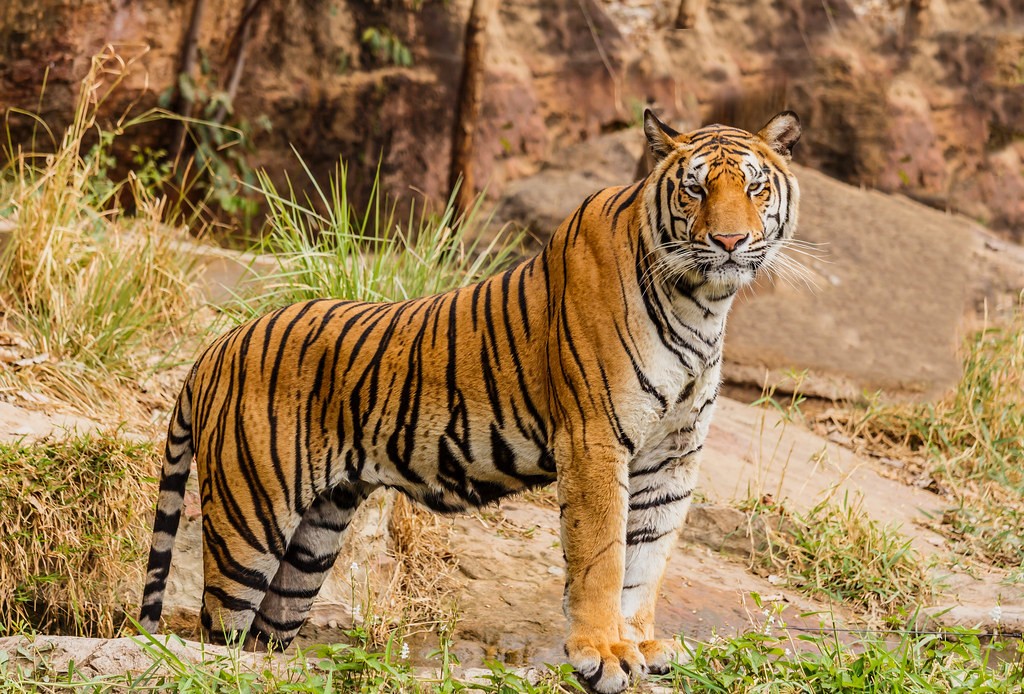
These days the situation is very different. Currently there is a little over 3000 tigers living in the wilds of India, a number that has doubled in a surprisingly short period of time.
Continue reading “Tigers are still moving between reserves, we must make it easier”
Big cats have a range of colours that they can be found in. It is certainly true that their standard colour is more common, but in different parts of their range other colourings might be more helpful. For instance, an Amur tiger that was white may find it easier to creep up on its prey.
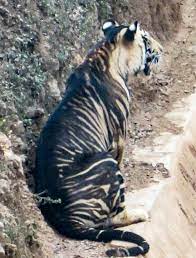
On the Malay peninsular, as much as half of the leopards are black, as this gives them an advantage.
In this case, a black tiger was photographed. The animals was not entirely black, but having far wider stripes, its back looks more black with yellow stripes rather than the other way round. Fewer animals are taken out of the wild than in the past, when an animal like this would likely have been caught and sold to a zoo for many times the price that tigers normally fetch – as this tiger will increase visitor numbers.
Declared extinct in 2003, recent genetic analysis shows that the Caspian and Amur tiger are so similar that they cannot be declared as sub species. As such, if the Amur tiger population continues to reboand it would be possible to translocate members west to restart the Caspian tiger population.
This should not be done though until the Amur tiger population is more stable.
In 2009 Nepal counted 121 tigers. in 2013 198 was counted – a 60% increase. There are thought to be around 240 individuals at this point.

As such target met.
Russia surveys their tigers every 10 years, but out of sync with the international aims. In 2005 between 423 and 502 tigers were thought to be present. in 2015 this had moved to 480-540. As such there is nothing like a doubling represented, but perhaps more success has been had since
Unsure
The Malaysian tiger population (part of the Indochinese sub species) has a small but pretty stable population of tigers of between 250 and 340.
Unfortunately there does not seem to have been any increase. Having set a target of 1000 members in 2020 back in 2008, their efforts appear to have failed. Indeed some sources suggest that this may be a significant over estimate now.









Join as an ambassador supporter to
support this site, help save wildlife
and make friends & log in

